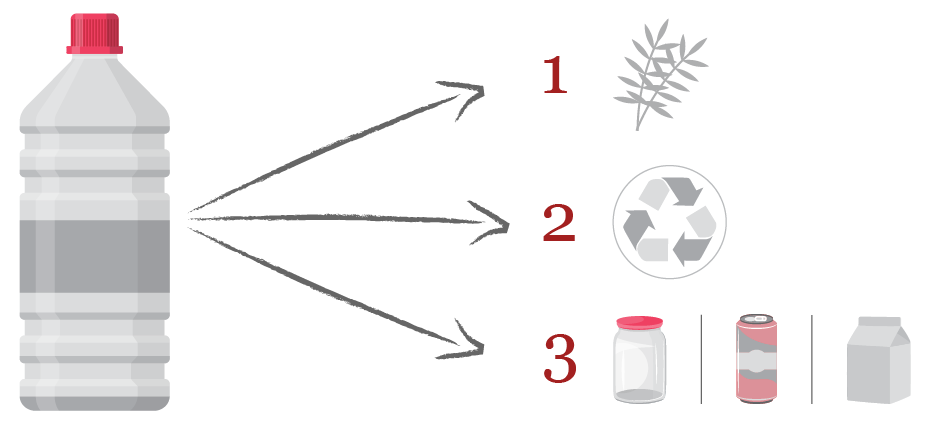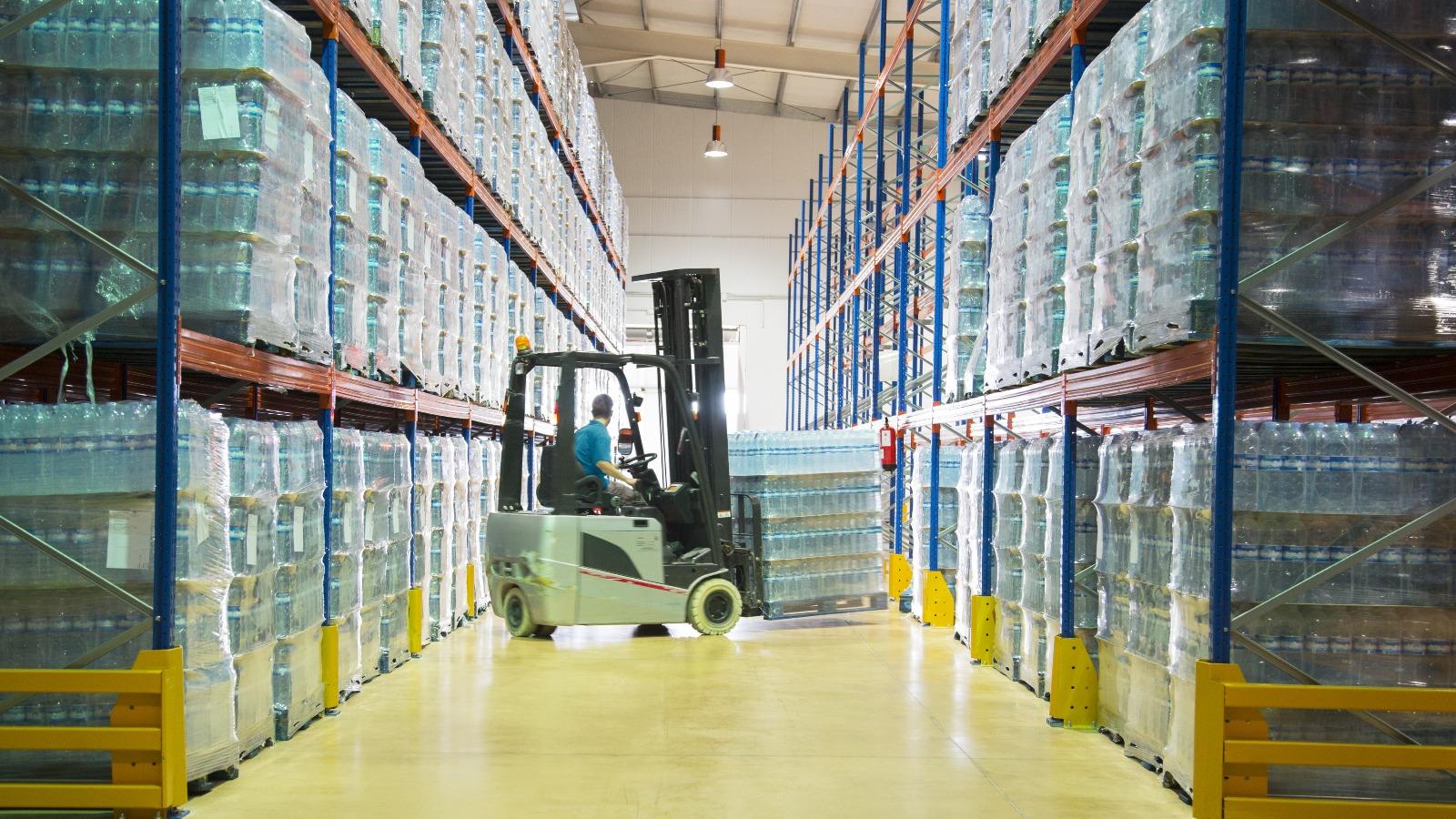Plastic is facing heightened scrutiny from consumers and regulators alike. To win in packaging, businesses must create a sustainable plastics ecosystem – while keeping a close eye on costs.
Brands continue to rely on plastic for a variety of packaging applications, including bottles, ready-meal trays, or films for fruit and vegetables, owing to the material’s unparalleled functional properties and cost-effectiveness. Consumer sentiment, however, is generally negative towards plastic packaging – in a recent survey, 82% of people prefer products to use as little plastic packaging as possible, while three quarters back a ban on single-use plastics1.
It is evident that pressure is mounting, and F&B companies face significant disruption to their plastic packaging ‘status quo’. In this article, we aim to highlight a selection of levers that F&B businesses can pull to optimize their plastic packaging for the future.
‘Plastics are the trickiest packaging material of all to get right… there is no single approach that works everywhere.’
The drive to dematerialize
A key tenet of the push to optimize plastic packaging has been efforts to reduce plastic waste or dematerialize – F&B firms should explore a combination of the following two approaches:
Light-weighting
Over the last three decades, light-weighting2 practices have enabled material cost savings, with clearly-defined benefits from the perspective of minimizing material, production, and transport costs. Even a few grams from the average plastic bottle or container can significantly reduce the level of virgin resin input required from fossil feedstocks, in turn reducing system emissions. For example, our benchmarking indicates that the average weight of a typical 500ml carbonated soft drink single-use PET bottle in Europe fell 33% from 2008-20223.

Light-weighting does, however, have trade-offs which need to be finely balanced. Light-weighting can reduce the after-use value of the packaging, which may in turn disincentivize recycling. The lighter packaging can also compound leakage problems . Equally, the emerging trend of multi-material packaging, to counter slowing efficiency gains in single-material formats, leads to complexities. Identification difficulties in waste sorting facilities, and incompatibility with the current recycling infrastructure, directly hinder circularity. Therefore, navigating light-weighting requires F&B brands to find an equilibrium between cost and emissions savings, without inadvertently eroding the potential for effective post-use recovery.
Switching to alternative packaging materials
F&B businesses should also explore switching from fossil-based plastics to substitutes such as bio-based plastics. Sourcing plastic materials from renewable sources such as biomass is attractive, as it decouples plastic production from finite fossil feedstocks and reduces emissions – by 20-30% according to some estimates4. Bio-based plastics are direct substitutes, as they have the exact same chemical and physical properties and therefore do not radically alter the existing value chain.

However, bio-based plastics are challenged by their current cost profile, hindering widespread adoption. Bio-based plastics tend to be 20-50% more expensive than their virgin counterparts5. Another obstacle stems from consumer perception: the image of plastic waste – even when produced from plants – as having the potential to cause significant harm to nature. Whilst bio-based plastics do reduce emissions in production, they fail to address the issue of plastic waste post-use.
Any substitution should be evaluated on a case-by-case basis, considering life-cycle emissions. For example, in beverage applications, mechanically recycled PET may yield lower carbon emissions compared to recycled glass and aluminum in some circumstances6. Consequently, the adoption of substitute materials should be limited to targeted applications where the sustainability benefits tangibly outweigh any drawbacks.
Standardizing design for recyclability
Plastic packaging design is the most important driver of recyclability. Looking in your local supermarket, however, you will quickly find a diverse array of plastic formats and materials. This fragmentation presents a significant challenge, as it directly impedes economies of scale in collection, sorting and reprocessing. For instance:
- 1Inconsistencies in packaging format/ material can cause identification issues
- 2Packaging elements such as adhesives and inks can be incompatible with typical cleaning technology
- 3Multi-material formats can be challenging to separate
- 4Low volumes of a given material reduces the economic viability of investing in the required capacity
One potential solution for F&B companies are agreed guidelines for plastic packaging design and materials. An illustrative example of efforts at standardization can be found in the European PET Bottle Platform, which provides up-to-date standards for PET bottle design, integrating the latest research findings and technological advancements.
A similar industry-led initiative for all plastic packaging would enable economies of scale in after-use processes and greater certainty across the recycling value chain over what infrastructure to invest in, thereby improving sustainability outcomes.
Building partnerships to deliver at-scale reprocessing
Even with improved design, circularity will not be improved if recycling and reprocessing capacity for plastics do not follow hand-in-hand. High CAPEX costs and insecure access to feedstock act as major barriers to entry for new players. Integrated waste management companies therefore dominate the space, due to their easy access to supply. The main barriers to expanding capacity are:
- 1Volatility of feedstock (inputs) and offtake prices (hindering an infrastructure-style investment)
- 2Difficulty in securing high-quality feedstock (not only by improving collection, but also limiting exports and downcycling feedstock)
- 3Policy uncertainty leading to volume uncertainty (a deposit return scheme could increase volumes greatly, but implementation has lagged behind in a number of European countries)
Finding a middle ground for feedstock value is critical. Low bottle value disincentivizes collection and recycling, while too high prices create a wide margin between virgin plastics and recycled plastics, rendering F&B businesses unable to pay for recycled content. Further complicating matters, demand for non-food grade plastics, e.g., from the textiles industry, often cannibalizes demand for food-grade reprocessing. A balance needs to be struck to ensure the sustained growth and success of mechanical reprocessing facilities for food-grade plastics.
We advocate for a collaborative effort between F&B companies and the mechanical reprocessing industry to strengthen the recycling value chain and foster substantial investment over the next decade. F&B brands can signal strong and growing demand for food-grade plastics by establishing long-term offtake agreements. Such agreements enable guaranteed cash flows for reprocessors, de-risking the investment and lowering the cost of capital. Some F&B brands have even taken a step further, by directly investing in the development of reprocessing facilities, ensuring guaranteed access to recycled plastics supply. Providing greater demand certainty will be a key lever for F&B brands in scaling up capacity.
Partnership example
Situation: In 2012, Coca-Cola and EcoPlastics (now known as CleanTech, and owned by Plastipak) signed a joint venture to build a food-grade PET reprocessor in Lincolnshire, England.
Result: In 2017, Coca-Cola signed a 5-year offtake agreement with CleanTech, enabling secure access to rPET supply from the facility’s 35kt output capacity. The strategic partnership enabled further investment in the facility, allowing Coca-Cola to hit 50% rPET content in the UK.
Activating the levers to deliver change
The plastic packaging ecosystem is in a state of flux. Our selection of levers to address this highlights three overarching principles that F&B businesses can embed into their packaging strategy:
- 1Dematerialize intelligently: Weigh up the trade-offs of shifting material / formats and ensure that strategies to reduce plastic use fully align with circular economy principles and decarbonization.
- 2Standardize packaging and de-risk investment: Adopt a risk-sharing approach to pursuing innovation opportunities through collaboration and investment, including by agreeing on standardized design.
- 3Collaborate with businesses across the value chain: Improving circularity hinges on sufficient recycling and reprocessing capacity, and the ability of F&B businesses to re-capture the volumes for their own applications. Giving recycling providers greater certainty over demand through longer-term agreements can boost investment to expand capacity.
This is the first edition from our series of detailed deep dive articles on packing optimization.
Tim Martiniak, Sebastian Weber, and Ben Coxon have also contributed to this article.






